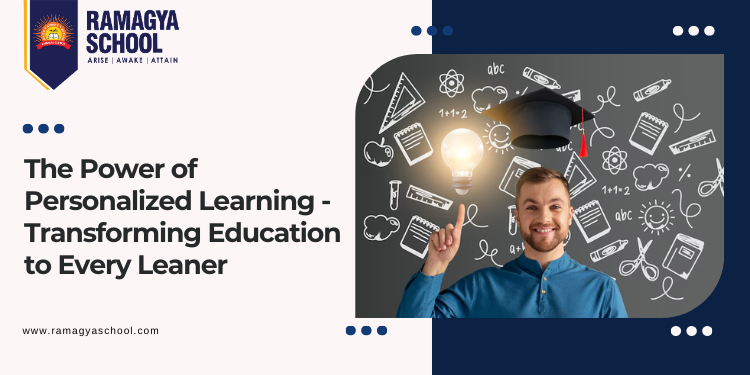Similarly as with any journey, education is best customized to every person. This journey is directed by personalized learning, which guarantees that each student’s way will be unique, engaging and fulfilling. This comprehensive blog takes care of the significance of individualized learning in education. We will also analyze its advantages, execution strategies, and the significant impact it has on the future of learning.
Understanding Personalized Learning:
Envision an educational setting where every student is viewed as an individual with distinct abilities, interests, and techniques for learning. This is what’s really going on with individualized learning. This isn’t your common “one-size-fits-all” informative method. It recognizes that every student ought to have a modified opportunity for growth in light of their requirements and interests. This answers the question of what is learning in education.
Personalized learning gives students the opportunity to assume responsibility for their schooling, empowering self-inspiration, independence, and an affection for learning. The objective is to meet students where they are and assist them get to where they want to go.
Advantages of customized learning:
- Individualized Guidance: A significant advantage of personalized learning in education is the capacity to tweak guidance for every student in the light of their exceptional learning profile. By understanding the qualities, weaknesses and interests of every student, teachers can make pathways of learning in education that cater to their individual needs and speed of learning.
- Motivation for students: When students believe their education is relevant, important, and specifically tailored to their goals and interests, they are more likely to be convinced and have a stronger sense of connection. Personalized education fosters creativity, curiosity, and independence. This greatly enhances the fulfillment and enjoyment of learning.
- Individualized Instruction: Personalized learning enables teachers to provide specific guidance and support to students who may need further assistance or improvement. Teachers can provide understudies with feedback and structure for their learning by acknowledging their strengths and weaknesses.
- Differentiated support: Through personalized learning, educators can provide specific guidance and support to students who may need more assistance or improvement. By identifying strengths and weaknesses, teachers can provide guidance and structure for the learning of their students.
- Enhanced Collaboration: Students are encouraged to work in groups as they explore, create, and solve problems as a result of customized learning. All understudies benefit from distributed partnerships in terms of improved teamwork, relational skills, and social and deep growth.
- Lifelong Learning: Personalized education equips students with the tools and perspectives they need to thrive in a constantly changing environment by fostering critical thinking, decisive reasoning, and autonomous learning. Understudies learn how to be resilient, adaptable, and long-lasting learners. They are also able to investigate challenging issues.
- Flexibility and adaptability: Personalized learning is flexible and adaptable, enabling it to accommodate the various learning preferences, aptitudes, and styles of students. Understudies can receive instruction tailored to their preferences, be it auditory, visual, or tactile methods, thanks to customized learning.
Higher participation in personalized learning:
One of the main ways that tailored learning increases understudy commitment is by emphasizing individual supervision. Rather than approaching instruction in a “one-size-fits-all” manner, teachers might modify their advice based on the unique strengths, abilities, and learning styles of each understudy. When the subject matter is appropriate for their comprehending level, understudies become more engaged and scrutinized.
Personalized learning also encourages students to take ownership of their education. When understudies realize they have a say in what and how they are taught, they become more engaged in the learning process. Understudies are encouraged to research subjects that particularly interest them, as this fosters curiosity and serves as a source of inspiration.
Another benefit of personalized training is separate assistance. Students who require further support or guidance are given special prayers and encouragement to help them succeed. With this tailored approach, every understudy is guaranteed the support they need to reach their maximum academic potential.
Putting Personalized Learning Into Practice:
To implement customized learning successfully, a shift in the way that lessons are taught and how educational plans are put together is required. Teachers should employ student-focused practices, guiding their informing decisions with developmental assessment, student input, and ongoing review.
Innovation tools and computerized resources can help students create personalized growth chances. They let people go anywhere, work with friends, and arrive at their destination. Encouraging teachers with the knowledge, tools, and resources they need to carry out individualized instruction requires providing them with competent guidance and assistance.
Challenges and considerations:
Although there are numerous benefits to personalized learning, there are also considerations and questions that need to be answered. They could consist of:
- Value and Access: Ensure that all students, regardless of their financial situation or place of residence, have equitable access to tailored educational opportunities.
- Data security and privacy: using cutting-edge platforms and innovative tools for personalized learning while protecting sensitive student data and adhering to security regulations.
- Teacher Workload: Manage the increased responsibilities that come with providing feedback, monitoring student progress in individualized learning environments, and tailoring advice.
- Cultural competency: It is the ability to recognize, understand, and integrate various social foundations, viewpoints, experiences, and foundations into the design of individualized learning materials.
- Parent and Community Engagement: Enlisting the cooperation of local partners, guardians, and families to assist with tailored learning initiatives and to encourage individual accomplishment.
Conclusion:
More than just a trend, personalized learning represents an important change in the way we teach and learn. By identifying and addressing each student’s unique needs, interests, and abilities, customized learning helps students reach their full potential. Expect significantly higher levels of student dedication, academic success, and value as educators, legislators, and partners continue to embrace personalized learning. Working together, we can promote tailored learning as the cornerstone of outstanding teaching and make sure that every student has the chance to thrive and develop along their educational journey.
Read our Article: Ramagya School – Transforming education as Noida’s best School





